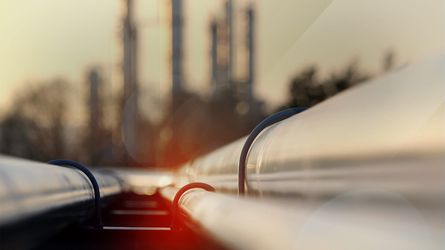
Refineries
We have been supplying pumps and systems for distillation plants for processing crude oil for 60 years. Ask our experts for more information!
Read more
LEWA ecoflow diaphragm metering pumps and LEWA triplex process diaphragm pumps in the remote-head design provide the following benefits for producing biofuels:
How are BtL fuels produced?
BtL (biomass to liquid) fuels are synthetic fuels produced out of biomass. As part of the energy turnaround, the focus has moved to biofuels such as biodiesel, bioethanol and various synthetic fuels.
Today, there are different pilot plants for the production of biofuels out of biomass in use. The first step in the production process of BtL fuels is the gasification of the biomass (pyrolysis). In a more or less heavy reacting thermal splitting at temperatures varying from 200 to more than 1000 °C, the chemical structure of the mass is modified. Long molecular chains split up due to the influence of heat. A synthesis gas is produced, which contains hydrocarbons with shorter molecular chains, carbon monoxide and dioxide as well as pure carbon and water vapor. The subsequent step is the synthesis: The synthesis gas is chemically processed, often by using the classic Fischer-Tropsch method. As a result of this proceeding, different gaseous and liquid hydrocarbons remain, which are used as low-sulfur synthetic fuels in industry.
“The final products differ chemically from regular fuels like gasoline but still can be used in gasoline or diesel engines, and they can be distributed via already existing gas stations. BtL fuels are second generation biofuels. That means they can be made from a wider spectrum of raw materials than biodiesel or bioethanol. For example, cellulose-rich biomass like straw or wood can be used. Fuel yields per hectare could thus be increased. If slurry, waste wood, compost, dairy or natural waste from food services are used, there are fewer problems because of the scarcity of areas of cultivable land used for food crops and forages“.
source: Wikipedia.de; June, 2014